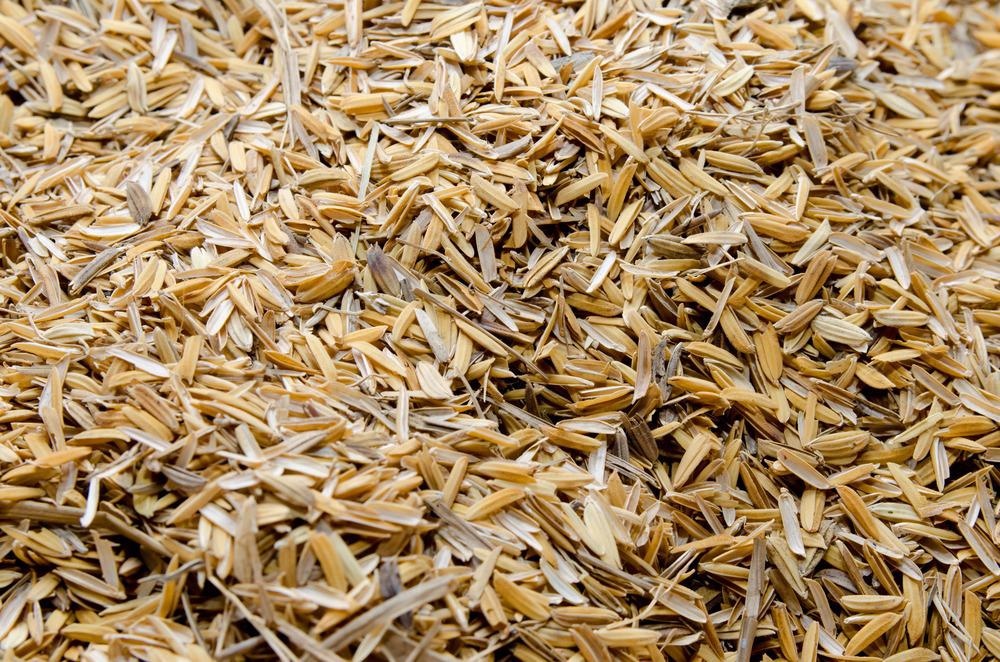.jpg) By Susha Cheriyedath, M.Sc.Reviewed by Skyla BailyNov 15 2021
By Susha Cheriyedath, M.Sc.Reviewed by Skyla BailyNov 15 2021A team of researchers from China recently synthesized a silicon-silicon oxide-carbon (Si-SiOX-C) based multi-layered composite anode for lithium-ion batteries to achieve enhanced electrochemical performance using rice husks. This research is published in the journal Electrochemical Acta.

Study: One-step synthesis of interface-coupled Si@SiOX@C from whole rice-husks for high-performance lithium storage. Image Credit: Sakdinon Kadchiangsaen/Shutterstock.com
Silicon-Carbon Composites: Anode Materials for Li-Ion Batteries
Lithium-based energy storage systems are the future of the world’s energy demand and supply curve. As the demand for electric vehicles is forever increasing, there is a need for the development of high-performance and eco-friendly energy materials for application in rechargeable lithium-ion batteries.
Silicon (Si) is one of the most promising anode materials, which possesses a high theoretical specific capacity (4200mAh g-1) and low discharge potential of less than 0.5 V. However, poor conductivity, and volume expansion during reversing cycles are some of the major challenges for their applications.
As an alternative, silicon-carbon (Si-C) composites are one of the most promising anode materials for Li-ion batteries due to their superior electrochemical performance. Over the past few years, researchers around the world have worked towards the development of silicon-carbon (Si-C) composite materials.
Porous silicon microsphere-carbon (pSiMS-C) core-shell composite, watermelon-like Si-C microspheres with layered buffer structure, silicon-carbon (Si-C) core-shell nanocomposite, and silicon core-porous carbon shell structure composite has been developed to enhance the cyclic performance of silicon-based anodes.
However, their commercial viability is seriously compromised due to the use of chemical reagents as carbon sources, capricious coating structures, and the complexity of the synthesis process.
Read More: Fast-Charging Li-Ion Batteries for Electric Vehicles
Nevertheless, fragile interface connections between the silicon core and the carbon layer remained a challenge due to the heterogeneity of the shell and the core. Moreover, the inherent mechanical rigidness of carbon cannot withstand multiple lithiation-delithiation cycles, thus resulting in structural collapsing and deterioration of the electrochemical properties of the electrode.
Additionally, there is an obligation to find alternative techniques and other material types for the synthesis of Si-C composites with superior performance in an eco-friendly way.
Si-SiOX-C Composite: Improved Alternative to Si-C Anode
The researchers used a one-step carbonization method at 800 °C in a nitrogen (N) environment to prepare Si-SiOX-C-800 composite in the shape of tiny silicon spheres coated with layers of SiOX and N-doped carbon by using 1-butyl-3-methylimidazolium acetate (BMIMAcO), silicon nanoparticles (Si-NPS), and rice husks.
After optimization, Si-SiOx-C-800 was applied to the anode of lithium-ion batteries. The resulting multi-layered composite exhibited enhanced reversible capacity (694 mAh g−1 at 0.1 A g−1), excellent rate performance (220 mAh g−1 at 2 A g−1), and remarkable cyclic stability (460 mAh g-1 with a capacity retention of 105.7% at 1 A g-1 after 1000 cycles).
BMIMAcO was used as a coupling agent for the formation of Si-N bonds, which leads to a robust inter-bonding between the SiOX and biochar (carbonization of rice husk) layer, hence achieving optimum utilization of the rice husks components.
The coupling of interfaces by Si-N bonds led to the formation of a double-layered structure which improved Li+ diffusion coefficient and electrochemical molecular kinetics while limiting the volume variation of Si nanoparticles (Si-NPS).
Finally, the working electrodes were prepared by mixing the obtained Si-SiOX-C composite, acetylene black, and polyvinylidene fluoride (PVDF) binder at a weight ratio of 8:1:1 to form a homogeneous slurry which was then applied onto a copper (Cu) foil.
Lithium-ion battery, How does it work?
Video Credit: Lesics/Youtube.com
After that, the working electrodes were dried at 90°C for 24 h in a vacuum oven. Further tests were carried out using a battery test system (BTS), cyclic voltammetry (CV), and electrochemical impedance spectroscopy (EIS). The double-layer-structured Si-SiOX-C-800 composite material showed enhanced electrochemical performance.
Rice Husks: Eco-Friendly Ingredient in Si-SiOX-C Synthesis
Carbon derived from biomass is not only favored for its renewability, eco-friendliness, and economic viability, but also the abundance of valuable minerals such as silicon within it. Many researchers have used rice husk as a source of silicon as well. Hence, the co-existence of organic components and silica in rice husks makes it highly favorable for use as the anode of lithium-ion batteries.
The use of chemical reagents as the source of carbon leads to the generation of hazardous wastes like strong acids and alkali, thus posing a threat to the environment. Ionic liquids (ILs) such as BMIMAcO have garnered wide attention as environment-friendly and promising reaction media for the synthesis of carbon through graphitization of biomass materials for application in electrochemical energy storage due to their chemical and thermal stability, high ionic conductivity, and low vapor pressure characteristics.
Reference:
Ren, Z. et al., One-step synthesis of interface-coupled Si@SiOX@C from whole rice-husks for high-performance lithium storage, Electrochimica Acta (2021).139556, https://www.sciencedirect.com/science/article/pii/S0013468621018405?via%3Dihub
Disclaimer: The views expressed here are those of the author expressed in their private capacity and do not necessarily represent the views of AZoM.com Limited T/A AZoNetwork the owner and operator of this website. This disclaimer forms part of the Terms and conditions of use of this website.